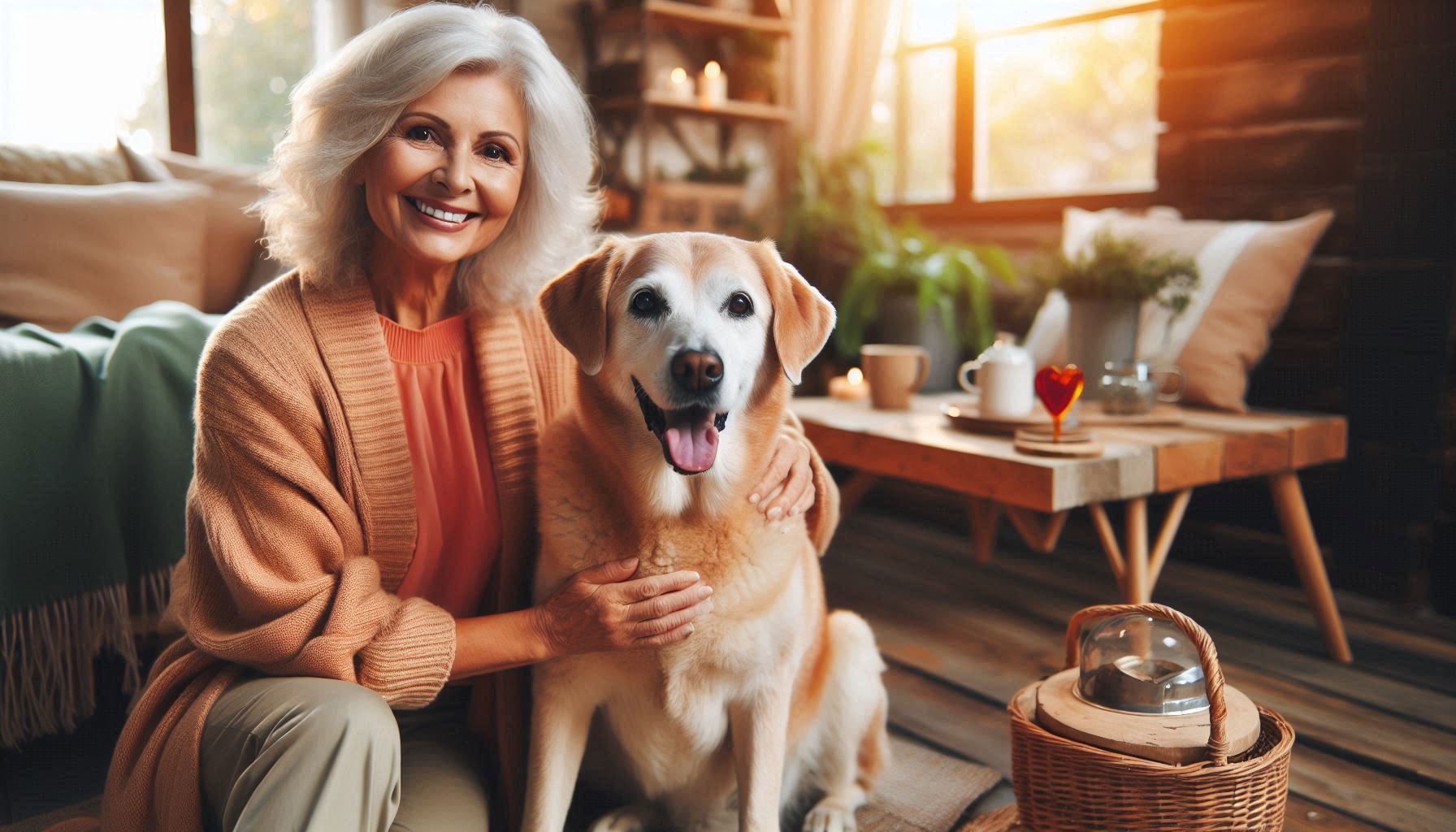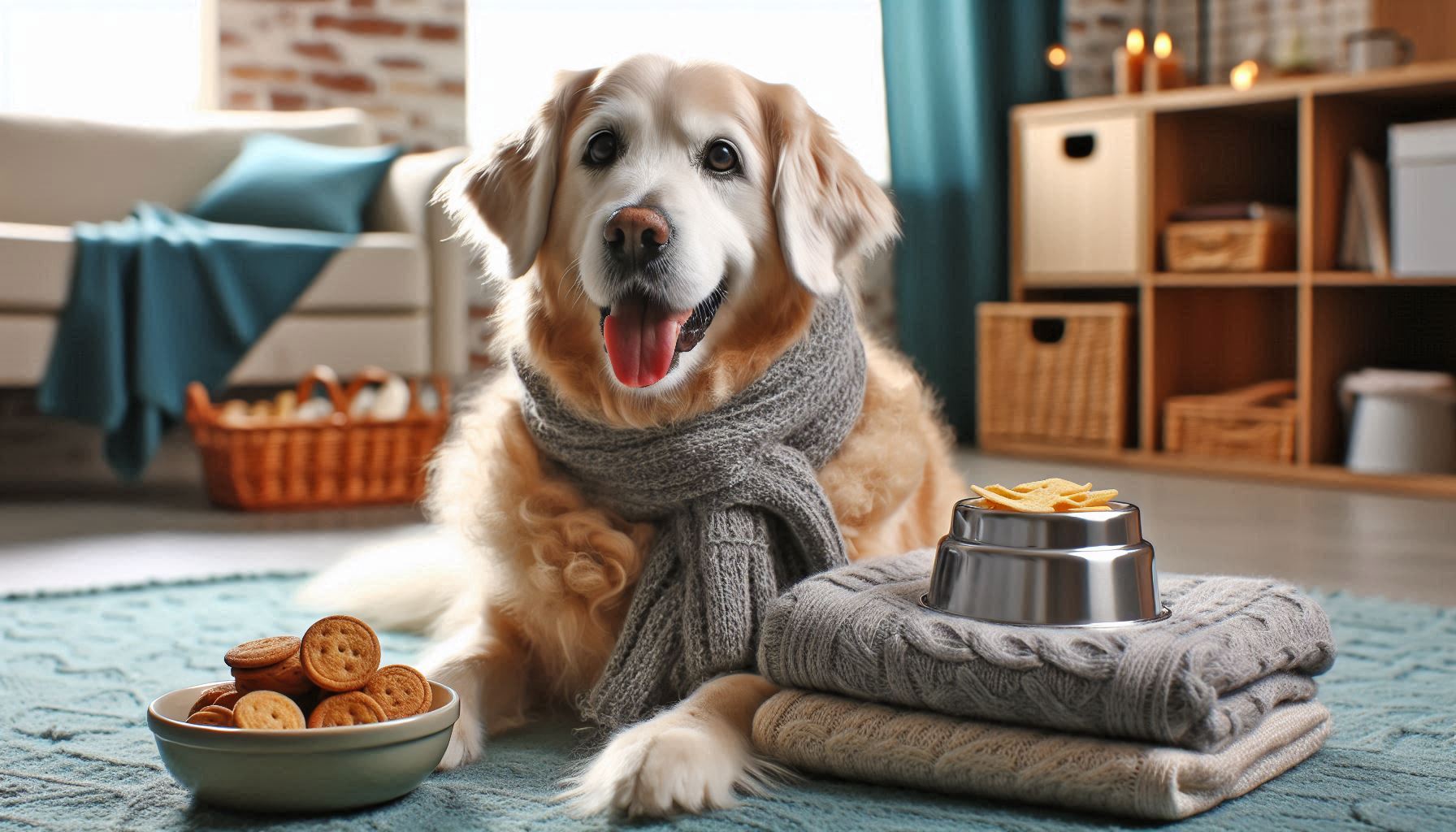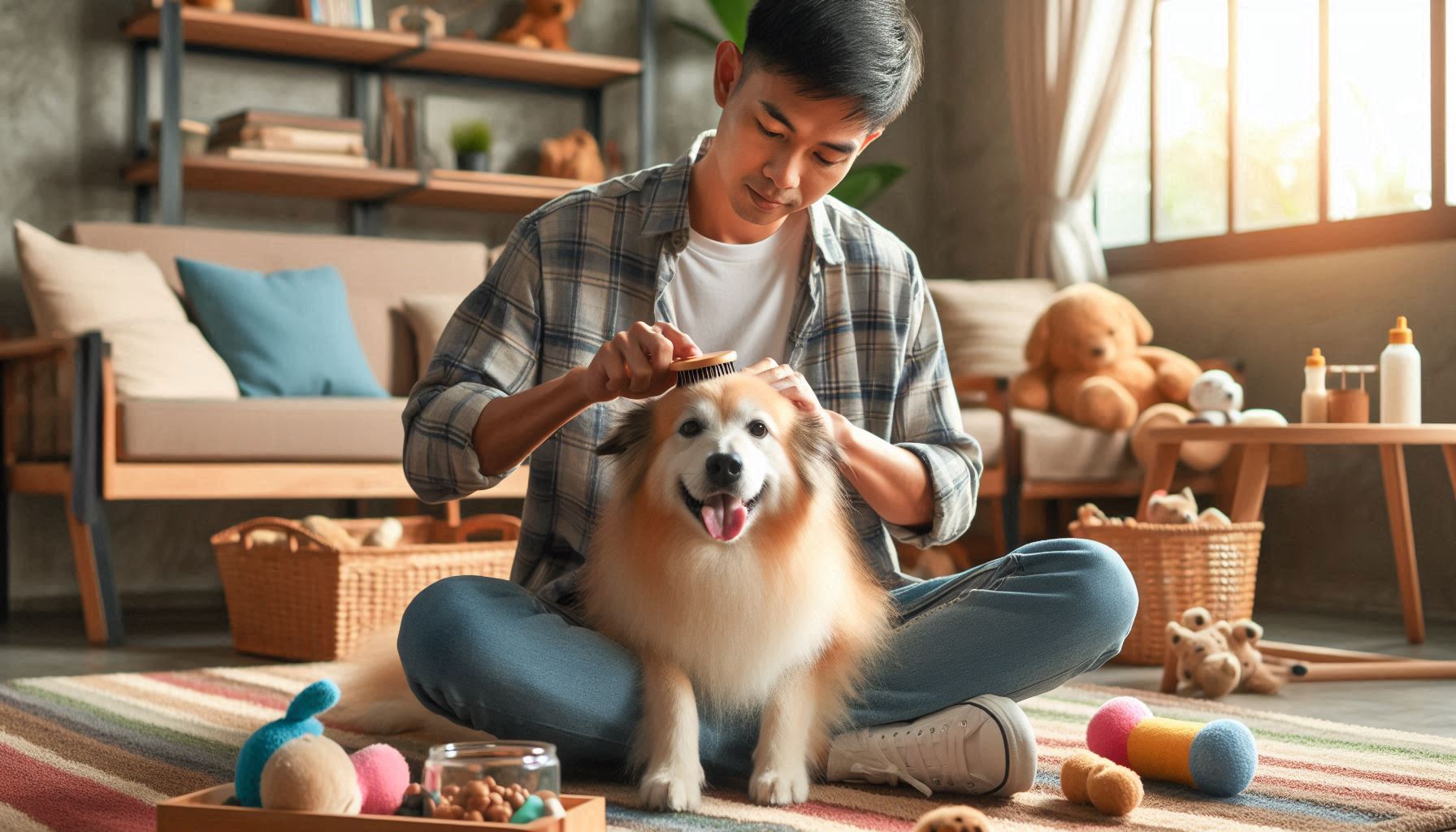Contents
- 1 Unlock the Secrets to Loving How to Care for a Senior Dog
- 1.1 Physical Changes to Expect in Your Ageing Dog
- 1.2 Nutrition: The Foundation of Senior Dog Health
- 1.3 Adapting Exercise Routines for Senior Comfort
- 1.4 How to Care for a Senior Dog by Creating a Pet-Friendly Home
- 1.5 Healthcare: Prevention and Early Detection
- 1.6 Enrichment and Mental Health in Ageing Dogs
- 1.7 Essential Tips on How to Care for a Senior Dog with Pain Issues
- 1.8 Celebrating Senior Dog Moments
- 1.9 FAQ: Common Senior Dog Questions
- 1.10 Conclusion: The Journey of How to Care for a Senior Dog
- 1.11 References
Unlock the Secrets to Loving How to Care for a Senior Dog
Your beloved canine companion has stood by your side through various challenges, and now their muzzle is beginning to show signs of ageing. While the days of puppyhood may be behind you, the golden years with a senior dog can be equally rewarding, perhaps even more so. The golden years with a senior dog can be as rewarding as puppyhood, if not more so.
I still remember the day I noticed Max was getting older. We were on our usual trail, and he just… stopped. He needed a break, not because he was attracted to anything. That was new. That moment changed how I approached our time together, and honestly, our bond grew even stronger.
Let me share what I’ve learnt about caring for old dogs. These aren’t just tips from some book—they’re real lessons from someone right where you are now.
Physical Changes to Expect in Your Ageing Dog
When Max turned 10, I noticed changes almost weekly. Some are subtle; others are not so much. Understanding these changes helps you adapt to your dog’s evolving needs.
My dog started showing
- Less energy on walks—what used to be an hour became 30 minutes, then 20
- Morning stiffness—he’d take longer to get up after sleeping
- Grey hairs—first around his muzzle, then spreading to his face
- Weight fluctuations—gained a bit at first, then started losing
- Dental problems—his breath got worse despite the dental chews
- Thinner skin that seemed to bruise from bumping into things
- Eyes getting cloudy— not quite cataracts yet, but different
- Selective hearing (or at least that’s what I thought at first)
What’s the challenge? It’s crucial to acknowledge these alterations as typical. Your dog isn’t necessarily sick—they’re just experiencing the natural ageing process, kind of like we do.
Have you noticed your dog sleeping more? Don’t panic. Senior dogs often need 16-18 hours of sleep daily compared to the 12-14 hours of their younger years. Max started taking extra naps and seemed more worn out after activities. It worried me until the vet explained it was perfectly normal.

Nutrition: The Foundation of Senior Dog Health
I fed Max the same kibble for years. Big mistake. Senior dogs need different nutrition than younger ones, and I learnt the truth the hard way.
Making the Switch to Senior Food
So, when should you switch to senior dog food? It depends on your dog’s size. Small breeds typically age around 7 years, medium breeds around 7-8 years, and large breeds such as Max typically age around 6 years. But every dog is different—some show signs of ageing earlier.
What to look for in senior dog food:
- Fewer calories—older dogs gain weight easily
- More fibre—helps their digestion stay regular
- Extra antioxidants—boost their immune system
- Omega-3s—good for those creaky joints
- Right protein levels—maintains muscle without stressing the kidneys
Don’t just grab any bag labelled “senior,” though. Chat with your vet about what would work best for YOUR dog. Max needed specific support for his joints, so we found something with extra glucosamine.
I discovered a method that proved to be highly effective. I started dividing Max’s meals into smaller portions. Instead of breakfast and dinner, we had breakfast, lunch, and dinner. His digestion improved within days. No more upset stomach sounds keeping me up at night!
Hydration Matters More Than Ever
Water becomes crucial as dogs age. Their kidneys don’t work as well, and they dehydrate faster than younger dogs.
Here are some practical methods I used to encourage Max to drink more:
- Added water to his kibble to make a gravy
- Bought a fountain water bowl—the moving water interested him
- Put water bowls in different rooms—convenience matters!
- Dropped ice cubes in his water bowl as a treat
When Max got picky about drinking enough, I’d sometimes add a splash of low-sodium chicken broth to his water. The smell alone would get him drinking. Just a little flavor made all the difference.
Adapting Exercise Routines for Senior Comfort
Is your dog finding it challenging to manage those five-mile hikes now? Mine couldn’t either. But that doesn’t mean exercise stops being important. Regular, appropriate physical activity is key to preserving muscle mass and joint health in older dogs.
Finding the Right Balance
| Activity Type | Benefits | How Often | How Long |
|---|---|---|---|
| Walking | Keeps joints mobile, stimulates the mind | Daily if possible | 15-30 mins (or less on bad days) |
| Swimming | Easy on joints, builds muscle | 1-3 times weekly | 10-20 mins |
| Gentle play | Mental stimulation, bonding time | Daily | 5-15 mins |
| Nosework | Mental exercise boosts confidence | Every other day | 10 mins |
| Rest | Recovery, healing | As needed | As much as they want! |
Consistency beats intensity every time. Two short 15-minute walks daily worked better for Max than one long weekend walk that left him sore for days.
I mapped out three different walking routes near our house. The “good day” route had some gentle hills. The “so-so day” route was flat and shorter. The “tough day” route was just a slow meander around the block with plenty of sniff breaks. Having options ready made it easier to get him moving appropriately every day.
Watch your dog during and after exercise. Excessive panting, lagging, or seeming stiff the next day means you need to dial it back a bit. Max would tell me when he’d had enough by simply stopping and looking at me with those “I’m done” eyes.
How to Care for a Senior Dog by Creating a Pet-Friendly Home

Little changes around your house can make a huge difference for your older dog. I never realized how much Max was struggling until I made some adjustments.
Accessibility Modifications
- Replace stairs with ramps where you can (I used a folding one for the back porch)
- Put down rugs on slippery floors – those hardwoods were like an ice rink for Max
- Raise food and water bowls a bit so they don’t have to bend their neck so much
- Get an orthopaedic bed—or three! Place them in their favorite spots
- Try to keep everything they need on one floor, if possible
You don’t need to spend a fortune. When Max started slipping on our wooden floors, I bought some cheap runner rugs from a discount store and laid them along his usual paths. The difference was immediate—he went from cautious shuffling to confident walking overnight.
Temperature Control
One thing I didn’t expect was how sensitive Max became to temperature. He’d get cold so easily in winter, even indoors. And summer heat that never bothered him before suddenly seemed overwhelming.
I found him panting heavily one spring day when it was only about 75 degrees in the house. A small fan placed near his bed made a world of difference.
Consider adding:
- Extra blankets for their beds in winter
- One of those cooling gel mats for summer (totally worth the money)
- Access to both sunny spots AND shaded areas
- A light doggy sweater for winter walks if they’re short-haired
I noticed Max would seek out different sleeping spots depending on how he felt—sometimes the sunny patch by the window, other times the cool tile in the bathroom. I made sure both spots had comfortable bedding.
Healthcare: Prevention and Early Detection
Regular vet visits become even more important as your dog ages. While yearly checkups might have been fine during your dog’s prime years, senior dogs benefit from seeing the vet every six months.
Preventative Care Schedule
Your older dog’s health routine should include:
- Full physical exams twice a year
- Blood work to catch problems before they show symptoms
- Dental checkups and cleaning when needed (bad teeth can affect their whole body)
- Weight checks at each visit (weight changes can signal problems)
- Parasite prevention that’s right for their age and health status
Don’t wait until things get bad before getting help. With older dogs, small problems can turn serious fast.
When Max developed a slight limp, I figured he just needed to rest it off. By the time I finally took him to the vet a week later, the problem had gotten so much worse. If I’d gone in earlier, he could have avoided a lot of pain, and we might have needed less aggressive treatment.
Managing Chronic Conditions
Most senior dogs develop at least one chronic condition. Max developed arthritis and later experienced some heart issues as well. Having a good management plan makes all the difference in their quality of life.
For arthritis, we tried:
- Prescription anti-inflammatories
- Joint supplements (glucosamine helped a lot)
- Learning some physical therapy moves I could do at home
- Acupuncture (I was skeptical but it really helped Max!)
- Keeping his weight down to reduce strain on his joints
I kept a simple notebook where I’d jot down good days, bad days, changes in appetite, how much water he drank, bathroom habits, energy levels, or behavior changes. I didn’t keep a fancy notebook, just quick notes. But those notes were super helpful during vet visits and helped us spot patterns I might have missed otherwise.
Enrichment and Mental Health in Ageing Dogs
Elderly dogs require more than just physical care. Senior dogs need mental stimulation and emotional support as they age, especially when their senses start to decline.
Cognitive Enrichment Ideas
- Food puzzles that match their ability level (Max needed simpler ones as he aged)
- New but gentle training – old dogs CAN learn new tricks!
- Scent games that don’t require much movement (hiding treats under cups was Max’s favorite)
- Rotating toys to keep things interesting
- Short training sessions with lots of praise and treats
Is there a proverb that suggests we shouldn’t teach old dogs new tricks? Total nonsense. Max learned several new commands in his senior years. The mental workout seemed to keep him sharp and engaged.
One game we played almost daily: I’d put treats under one of three plastic cups while he watched, then mix them up. He had to nose the right cup to get the treat. As his thinking slowed down, I’d mix slower or use just two cups, adapting as needed so he could still succeed.
Maintaining Social Connections
Senior dogs still need social interaction, though their preferences might change. Max used to be the life of the dog park, then suddenly he wasn’t interested anymore.
He found big groups overwhelming in his older years, but he still enjoyed “coffee dates” with a few calm dog friends who would visit our home. He would greet them with a wagging tail, play for a few minutes, and then settle down nearby, remaining social but adhering to his own terms.
I noticed he became much more attached to me, often following me from room to room. Other senior dog owners tell me their dogs became more independent. There’s no right or wrong here – just changes to adapt to.
Essential Tips on How to Care for a Senior Dog with Pain Issues
One of the hardest parts of loving an older dog is watching for pain they try to hide. Dogs are masters at hiding discomfort—it’s instinctual. Max could be hurting for days before I’d notice anything wrong.
Look for these subtle signs:
- Hesitating before jumping up or climbing stairs
- Licking or chewing at specific spots constantly
- Breathing differently than usual
- Making little grunts or whimpers when lying down
- Getting cranky when touched in certain areas
- Sleeping more than their new normal
I waited too long once when Max was limping slightly. It was only a slight limp, barely noticeable. “He probably just played too hard,” I thought. A week later, he could barely walk. The arthritis had flared up badly, and I felt terrible.
Don’t wait like I did. Call your vet if you suspect pain. There are so many options now—from medications to supplements to physical therapy techniques you can do at home.
Sometimes, loving your senior dog means adjusting expectations. Max was no longer able to chase balls, but he still took pleasure in carrying one during our leisurely walks. We found new ways to enjoy our time together that didn’t cause him pain.
I learned to pay attention to the weather forecast, too. Cold, damp days made his joints worse. On those days, we’d stay in, turn up the heat a bit, and focus on gentle indoor activities instead.
Celebrating Senior Dog Moments
There’s a special sweetness to the senior years. The wild puppy and headstrong adult have mellowed into a wise companion who knows your routines and emotions sometimes better than you do.
Take time to celebrate these golden years.
- Create bucket list experiences appropriate for your dog’s abilities
- Take more photos and videos to preserve memories
- Establish new rituals that accommodate their changing needs
- Share your knowledge with other pet parents
The quiet moments often become the most precious. During strolls, your elderly dog pauses to thoroughly sniff everything. They emit a contented sigh as they settle down next to you on the couch. When they seek your attention, their nose gently nuzzles.
These aren’t consolation prizes for having an older dog—they’re the well-earned rewards of a profound relationship built over many years.
FAQ: Common Senior Dog Questions
How can I tell if my senior dog is in pain?
This is tricky because dogs hide pain so well. Watch for changes in how they move—maybe they’re slower getting up or avoid stairs they used to climb. Some dogs get snippy when touched in sore spots. Others might pant more or eat less. My dog Max would lick his sore joints obsessively. Trust your gut—you know your dog best. If something seems off, it probably is.
Is it worth adopting a senior dog?
Absolutely yes! Older dogs are wonderful—they’re usually already house-trained, less destructive, and so grateful for a second chance. Sure, you might have less time with them, but the bond can be just as deep. Plus, you’re doing something incredible by giving them a loving home for their golden years. Senior dogs have so much love to give.
What supplements should I give my ageing dog?
This depends on your dog. For joint issues (super common in seniors), glucosamine and chondroitin can help. Fish oil with omega-3s fights inflammation throughout the body. Probiotics might help if they have tummy troubles. I tried several probiotics before finding the one that worked for Max. Talk to your vet before starting anything—some supplements can interact with medications or aren’t right for certain health conditions.
When should I consider quality-of-life decisions for my senior dog?
This is the question that keeps us up at night. There’s no perfect answer, but I find it helps to track good days versus bad days. Can your dog still do a few things they love? Are they eating? Can they get up to go potty without extreme difficulty? Are they still interested in the world around them? When bad days outnumber good ones consistently, it might be time for that difficult conversation with your vet. Remember that our dogs often look to us to make the hard decisions they can’t make for themselves.
Conclusion: The Journey of How to Care for a Senior Dog
Caring for a senior dog isn’t always easy, but it’s one of the most rewarding experiences I’ve had. The journey with Max taught me patience, compassion, and how to live more in the moment. Our older dogs give us the chance to return all the love and loyalty they’ve shown us throughout their lives.
Remember that each senior dog is unique. What worked for my Max might need adjustments for your furry friend. The key is observation and flexibility—watching closely for changes and being willing to adapt your approach as needed.
The extra effort you put into caring for your senior dog pays off in countless moments of connection. There are those quiet evenings when your senior dog chooses to lie at your feet instead of going elsewhere. Slow, meandering walks become less about physical activity and more about gaining experience. They give you a deep look of trust when you help them with something they can no longer do themselves.
These golden years aren’t about mourning what’s past but cherishing what remains. With thoughtful care and adaptations, you can help your senior dog enjoy a comfortable, dignified, and joy-filled final chapter.
After all, they’ve given us their best years. The least we can do is make their final years their best as well.
References
American Kennel Club (AKC): Senior Dog Care Tips
PetMD: Caring for Senior Dogs
ASPCA: Dog Care: Seniors
